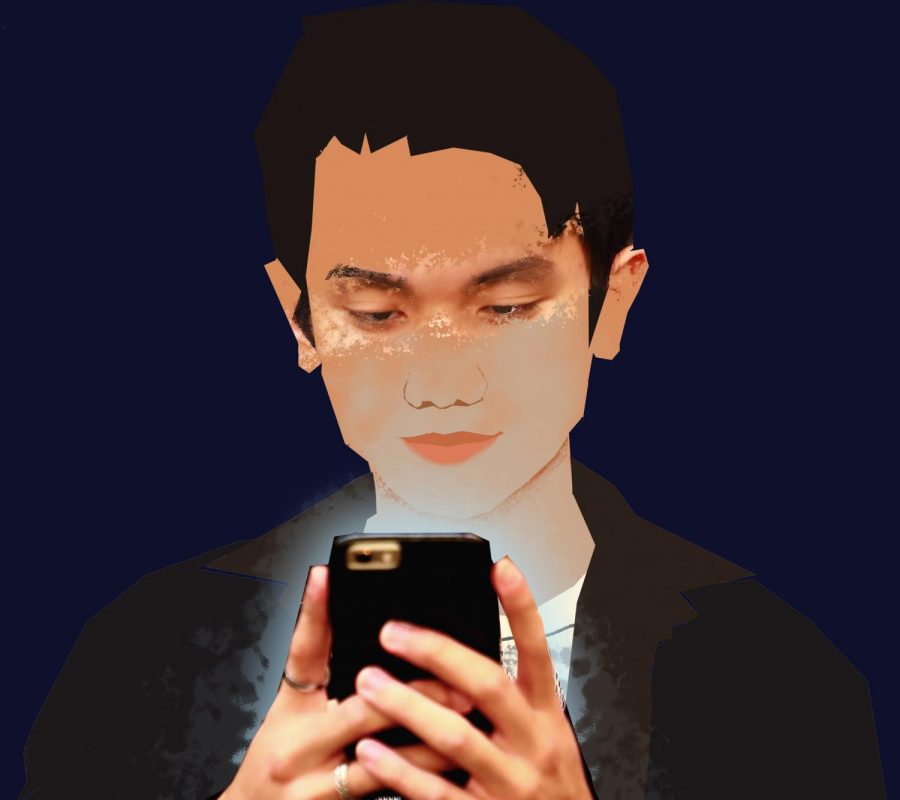Screen Time: The Good and the Bad
Mimi Gaudiano, Connor McKee-Sargent
INEVITABLE DISTRACTION: Nowadays it is practically impossible to walk down the street without seeing somebody staring at their electronic screen. But, do people tend to use these devices for more productive things or do they simply use them for the entertainment?
May 14, 2019
These days it is difficult to go anywhere without noticing that most people are focusing on their phone or some other electronic device. Technology, more specifically electronic visual displays, has become an integral part of the new world and most could not imagine going a day without electronic devices. Whether you are sitting at home staring at your computer screen, waiting in your car looking down at your phone or even waiting in an airport with your laptop open, there always seems to be a time and a place to use some type of screen technology.
Screen technology has evolved in a way that makes it extremely addictive and challenging to give up. Whenever somebody needs to relax after a grueling day of work, they may settle down and watch some Netflix or YouTube. If someone wants to talk with friends, they can text or Snapchat them while in the comfort of their home. If someone has some spare time they may play video games to quickly pass that time. Freshman Tanner Ross says he spends “roughly six to seven hours just scrolling through Instagram, Snapchatting or watching YouTube.” Ultimately, there is almost always something to do at any time during a normal day, simply by looking at your personal electronic devices.
Device applications that are most notable for entertainment include Instagram, Netflix, YouTube and Snapchat. These applications are the primary reason people spend so much time staring at their screens. Sophomore Jack Crithfield says, “I spend six hours a day on some sort of device, and only about 30 minutes of that time is allocated towards productive needs, such as homework.” Many other people find themselves in the sam position as Crithfield; wasting their time viewing alternative medias when they could be utilizing it in a productive manner. In fact, according to The Telegraph, people aged 15 to 24 spend an average of four hours a week on their smartphone alone. This can likely be attributed to the intensely addictive nature of these media platforms, as it is what they are designed to do.
However, screen time can also help make things like doing homework or certain projects far more efficient when one has the commitment to use it productively. If you need to look up a topic you want to learn, you can easily Google it from your device. Senior Kaleb Aho struggles to make screen time productive, but he “uses as much time as possible working on essays and looking up how to do certain schoolwork.” Say you need to check your answers for a problem. You can almost always find answers and correct you mistakes in less than a minute on a computer or smartphone.
There are so many productive benefits of screen technology and it is readily available to most, yet the problem lies with people and media companies being so addictive. For example, when using your laptop to complete an essay there are plenty of other things you could be doing on your laptop which could be distractors. If you have internet available, you can access any other website you would like instead of writing your essay.
Given that screen technology provides both entertainment and productive services, people must choose what they allocate their time to when using it. Junior Isobel Grudin says, “It can be tough deciding to focus when staring at a screen when you have a bunch of options which would be much more fun.” It is often difficult to pick when to be productive and when to relax, especially when some apps allow you to do both.
One app that can be a tool for both productive and entertainment purposes is YouTube. YouTube is widely known as a resource to learn school topics you may be confused about, but it also provides a great way to get a laugh. YouTube is a coalition of an immeasurable amount of individual creators making the opportunities endless in regards to what you can find. There are individual creators such as Vsauce, who specializes in scientific videos which can aid learning. On the other hand, there are channels like H3H3 Productions and Cody Ko who specialize in simply entertaining their immense following. The variance in types of YouTubers is what makes the platform so great, but one must be cautious when trying to learn or do productive things on it, since it is so easy to get sidetracked.
Screens are incredible tools in today’s society, but they seem to cater towards apps and features that will keep people staring down for hours. Platforms like Instagram and YouTube are taking away precious time with their addictive nature but also provide a beneficial side with enhanced communication and easier opportunities to learn. In the end, it is all up to user preference. If someone chooses to spend their time learning, it is far more accessible. If someone just wants to be entertained, they can reap the benefits of endless viewing options.


